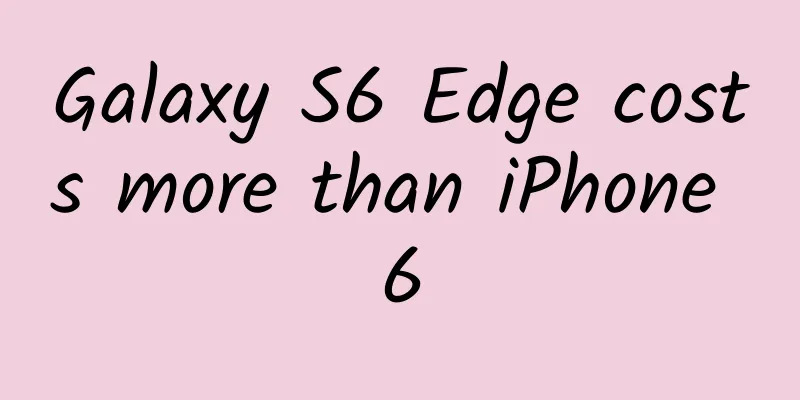|
The smartphone industry has always had a growth myth: from 2007 to 2017, the size of the smartphone market increased tenfold in ten years. In the era of the wild growth of smartphones, major manufacturers have spent a lot of money to build differentiated brand positioning. For example, Huawei used its authority in communications technology to establish its "hardcore technology" image; Xiaomi's ultimate cost-effectiveness won it a large number of "Mi fans"; OPPO's music camera phones and fast charging marketing also made it unique; Lenovo is trying to use the PC brand effect to replicate the glory of the mobile era. In 2022, however, Vivo encountered some setbacks and it seems difficult to tell a new story. Especially in 2022, after entering the so-called cold winter of the smartphone market, Vivo, the "sales champion", seems to have little to show for it. 1 The "sales champion" created by the strategy of flooding the market with products lacks value Globally, in 2021, Samsung ranked first in smartphone shipments, with 275 million units; Apple ranked second, with 230 million units; Xiaomi ranked third, with 191.2 million units; and OPPO ranked fourth, with 145.1 million units.
vivo ranked fifth with global shipments of 129.9 million units. Source: Canalys report In the domestic market, vivo's external publicity this year is: In Q2, vivo ranked second in the high-end mobile phone market and first among domestic mobile phone brands with a sales share of 13%; in Q3, its shipments remained at the top of the domestic list, and its market share increased to 20%, 3% ahead of the second place.
However, the "gold content" of this sales champion seems to be slightly insufficient.
A Weibo celebrity lamented that the gap between domestic mobile phone brands and Apple is too big.
It said that vivo sold 71 million mobile phones in China last year, with a revenue of 143.3 billion yuan, but the profit accounted for only 7.4%. Apple sold 50.3 million mobile phones, with a revenue of 329 billion yuan, and a profit share of 67.8%, with a net profit margin of 20%. In the same market, vivo sold the most, but the profit was several times less than Apple.
There seemed to be a sense of deep sorrow in his words. Image source: Sina Weibo In fact, it is no longer news that domestic mobile phone manufacturers have low profits.
High-end mobile phones have high profits but cannot be sold as well as Apple. There is fierce competition in the mid- and low-end markets, but after dealers take their share of the profits, manufacturers don’t get much at all.
Moreover, although vivo won the "sales champion", it essentially adopted the "sea of machines strategy".
For example, in 2021, vivo and its sub-brand IQOO released a total of 49 mobile phone models, with new models launched almost every month, including 36 models from the vivo main brand and 13 models from iQOO.
In comparison, during the same period, Xiaomi, Redmi and Black Shark released a total of 25 mobile phones, OPPO released 21 mobile phones, Huawei and Honor released 12 and 23 mobile phones respectively.
It can be seen that although vivo talks about streamlining its product line, it is unable to extricate itself from the "sea of machines strategy".
What’s more interesting is that although vivo holds high the banner of “high-end”, except for the NEX series and X series priced between 3,000 and 7,000 yuan, the rest of the series are “mid-to-low-end” products, and the prices are basically below 3,000 yuan - last year’s main sales model S12, the starting price was only 2,799 yuan.
The result is that vivo ranked last among the top five global smartphone revenues last year. Source: Counterpoint report The specific data are as follows: Champion: Apple, $196 billion;
Runner-up: Samsung, $72 billion;
Third place: OPPO (including OnePlus), US$37 billion;
Fourth place: Xiaomi, $36 billion;
Fifth place: vivo, US$34 billion. Xiaomi made a big fuss about its revenue after surpassing Vivo last year. After all, Xiaomi, which started out with its cost-effectiveness, can make more money than Vivo, so whether it wins the sales crown or not doesn’t seem to be that important.
It can be seen that vivo's road to high-end is indeed not so smooth.
In terms of business, we are always half a beat behind the main force. 2 Everything is "half a beat slower" In October 2018, Royole Technology released the country's first folding screen FlexPai; in February 2019, Huawei released its first folding phone, Huawei Mate X; in 2019, Samsung's folding screen mobile phone upgraded to the third generation, and by the end of 2021, it had monopolized 83.47% of the global folding screen mobile phone market; at the end of 2021, OPPO released its first folding phone, OPPO Find N.
Although vivo has always stated that it is planning related product lines, it was not until April this year that it released its first foldable screen mobile phone, vivo X Fold.
Interestingly, the "late-coming" vivo folding phone has created a concept of "folding screen 2.0". The selling points mentioned are: large screen, high refresh rate, dual fingerprint, self-developed chip and hover screen opening - although there is not much novelty, it seems to be an indispensable point - it seems more like relying on the "latecomer advantage" to "fill in the gaps" for the predecessors. Image source: Zhihu One reason is that foldable screen mobile phones are a step behind; the other reason is that tablet computers are a step behind.
In April this year, along with the folding phone vivo X Fold, vivo released its first tablet computer vivo Pad. At this time, the tablet market was already a red ocean. As early as 2020, when the epidemic first broke out, home office and quarantine leisure and entertainment consumption scenarios were booming, leading to a surge in demand for tablet computers. As a result, major manufacturers actively laid out tablet product lines.
Now, Huawei MatePad Pro and Honor Tablet V7 have been launched one after another, Xiaomi Tablet has launched the fifth generation, OPPO launched OPPO Pad in February, and Apple Pad, needless to say, has always been one of Apple's core product lines.
Third, with regard to the AIOT layout, that is, the IoT ecosystem layout, vivo’s position seems rather ambiguous.
At present, in the field of AIOT, vivo's product line only includes three types of products: headphones, mobile phones, and tablets. Other hardware ports are all cooperated with third-party companies, such as Midea, Skyworth, TCL, etc.
In contrast, Xiaomi has incubated hundreds of AIOT terminals through the IoT ecosystem.
What’s even more interesting is that as an important entrance to the smart Internet of Things in the future, major mobile phone manufacturers either build cars themselves, such as Huawei and Xiaomi, or try to enter the market through investment or other means.
However, vivo acted rather ambiguous, as if making cars was not a very glorious thing. Therefore, after Huawei had already released 54 pieces of information related to autonomous driving, vivo only released its autonomous driving patent information in April this year.
In fact, after analysis, we can see that vivo is conservative in business innovation and product innovation, and does not dare to easily take the lead in the industry. In most cases, it only crosses the river with peace of mind after watching its competitors exit the market. Although this strategy reduces risks and seems safer, it also does not leave much market space for vivo.
From another perspective, vivo's layout of new products and new technologies may seem unhurried on the surface, but in fact it may be that its research and development cannot keep up. 3 In the era of inventory, vivo R&D can no longer "act" It is almost 2023, but it seems that the smartphone winter has not yet ended, and consumers are replacing their phones for longer and longer periods of time. In terms of data, Counterpoint Research once said that the average replacement period for users is now over 31 months, which means that they replace their phones every three years on average.
This cannot be blamed on consumers. On the one hand, the overall economic environment is indeed not very good, and consumer desire has decreased. On the other hand, smartphone products do not have any disruptive innovations that are attractive enough to consumers. Most of the time, manufacturers are just "squeezing toothpaste."
Since vivo started talking about its high-end transformation, it has been emphasizing that it is increasing its R&D investment. However, with its own business profits not being very impressive, vivo can only slowly and painstakingly accumulate funds for R&D.
Therefore, in terms of technological innovation, we have always followed the path we are familiar with - audio-visual technology and design aesthetics.
From the user's perspective, it means taking good photos and having a stylish appearance.
Even the first chip developed by vivo, V1, has the main performance improvement in image processing. Perhaps for female users, the photography function is very important, but for male users, the smoothness of the mobile phone system and the gaming experience may be more worthy of consideration.
As the saying goes, "Don't pretend to work hard, the results won't play along." Perhaps vivo needs more "dry goods" in terms of technology research and development.
From the perspective of most user needs, it is inefficient for mobile phone manufacturers to pursue internal parameters. Now basically every new mobile phone on the market emphasizes how many billions of pixels it has, but the actual user experience is not the case. This has instead caused users to become numb to product parameters.
Moreover, the so-called "high-end" is neither high price nor high parameters. For users, the "high-end" that can be felt is firstly the high-end product and secondly the high-end brand.
In terms of products, vivo's product iteration and R&D mainly focuses on imaging, operating system, design, etc. However, the actual situation is that after the product is released, the only selling points that can be highlighted are imaging and eye protection.
Even in terms of the system, because there are too many models, the system compatibility of various vivo models is likely to be damaged, which may also affect the actual user experience. From these few points alone, it is indeed difficult to leave a high-end image to consumers. Even folding phones with prices reaching five figures cannot be packaged as "high-end folding screens" in front of their predecessors.
In terms of brand, in the entire industry, the brands that can occupy the minds of users with the label of "high-end" are Apple and Huawei. First, their products are exquisite, and second, their after-sales channels are strong and stable. Vivo, which wants to build a high-end brand image, has relied on the strategy of launching a large number of machines in the past two years, and the core technology of each generation of products has not been significantly updated. The channels are still mainly agents, and the development strategy of sinking and pressing goods.
Therefore, vivo's overall user group now still tends to be users in the sinking market - media reports show that second-tier and lower cities account for 77% of vivo users - which seems to be far from vivo's high-end dream.
Having said that, everyone wants to be high-end, and everyone wants to make good products, raise prices, and increase profits. This is easy to understand, because high-end brands are easier to create "user stickiness." In the eyes of users, high-end brands and high quality are almost equal.
Take the yoga apparel brand lululemon for example. Consumers who buy lululemon would rather believe that they are using it the wrong way than question whether the product itself is not scientific enough. This is the so-called "buy a big brand, feel more assured"
However, with everyone moving forward, if Vivo doesn’t speed up and continues to be “half a beat slower” than before, it will be “hit from a higher dimension.” After all, if its competitors are moving forward at an accelerated pace, even if Vivo is growing, it will only be further away.
As a winner of Toutiao's Qingyun Plan and Baijiahao's Bai+ Plan, the 2019 Baidu Digital Author of the Year, the Baijiahao's Most Popular Author in the Technology Field, the 2019 Sogou Technology and Culture Author, and the 2021 Baijiahao Quarterly Influential Creator, he has won many awards, including the 2013 Sohu Best Industry Media Person, the 2015 China New Media Entrepreneurship Competition Beijing Third Place, the 2015 Guangmang Experience Award, the 2015 China New Media Entrepreneurship Competition Finals Third Place, and the 2018 Baidu Dynamic Annual Powerful Celebrity. |










